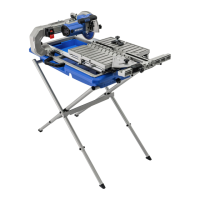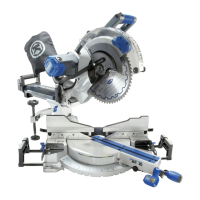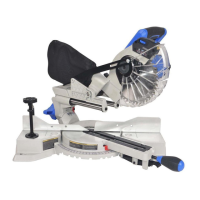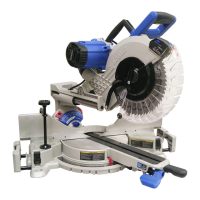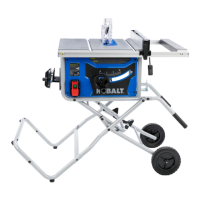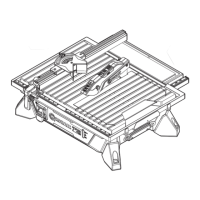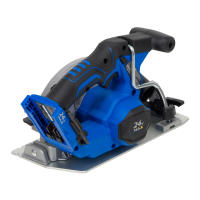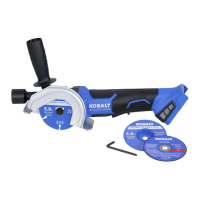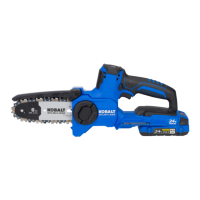42
CARE AND MAINTENANCE
WARNING: Do not service, clean or maintain
the saw without rst turning o the motor
and unplugging the saw from the power
source. Failure to do so may result in serious
personal injury.
REPLACING CARBON BRUSHES (FIG. 48)
NOTICE: Replace both carbon brushes when
either has less than 1/4 in. length of carbon
remaining, or if the spring or wire is damaged or
burned.
● To inspect or replace brushes, rst unplug
the saw.
● Loosen the cutting head lock knob (MM) and
pull out the hold-down latch (SS) to raise the
cutting head at the maximum height. Release
the hold-down latch (SS) and tighten the
cutting head lock knob (MM).
● Loosen the bevel lock knob (PP) to tilt the
cutting head at 45° clockwise. Tighten the
bevel lock knob (PP).
● Remove the black plastic cap (1) on the side
of the motor. Remove the cap cautiously,
because it is springloaded. Pull out the
carbon brush (Ff) and replace.
48
1
Ff
● The ears on the metal end of the assembly go in the same hole the carbon part ts into.
Tighten the cap snugly, but do not overtighten.
● Repeat for the carbon brush located on the other side of motor.
NOTICE: To reinstall the same brushes, rst make sure the brushes go back in the way they came
out. This will avoid a break-in period that reduces motor performance and increases wear.
CLEANING
● Insert the water pump into a bucket with clean water and pump the water through the clear
water tube allowing the tube to be cleaned.
● Turn o and unplug the saw from the power source.
● Place a bucket under the drain plug. Remove the drain plug and allow the water to empty into
the bucket.
● Slide the edge guide o the rail system. Spray the Rip/Angle guide with a hose or wipe with a
grout sponge or clean cloth.
● Wipe the sliding table, motor housing, and motor support arm with a grout sponge or clean
cloth. Spray lubricants are not required on the rail or cutting wheel.
● Remove all water catch trays and clean the water trays by spraying with a hose or wiping with
a grout sponge.
Use clean cloth to remove dirt, dust, oil, grease, etc. Do not use gasoline, turpentine, lacquer or
paint thinner, dry cleaning uids or similar products. Chemicals can damage, weaken or destroy
plastic which may result in personal injury.
Try not to let any liquid get inside the motor; never immerse any part of the tool into a liquid.
MM
PP
SS
